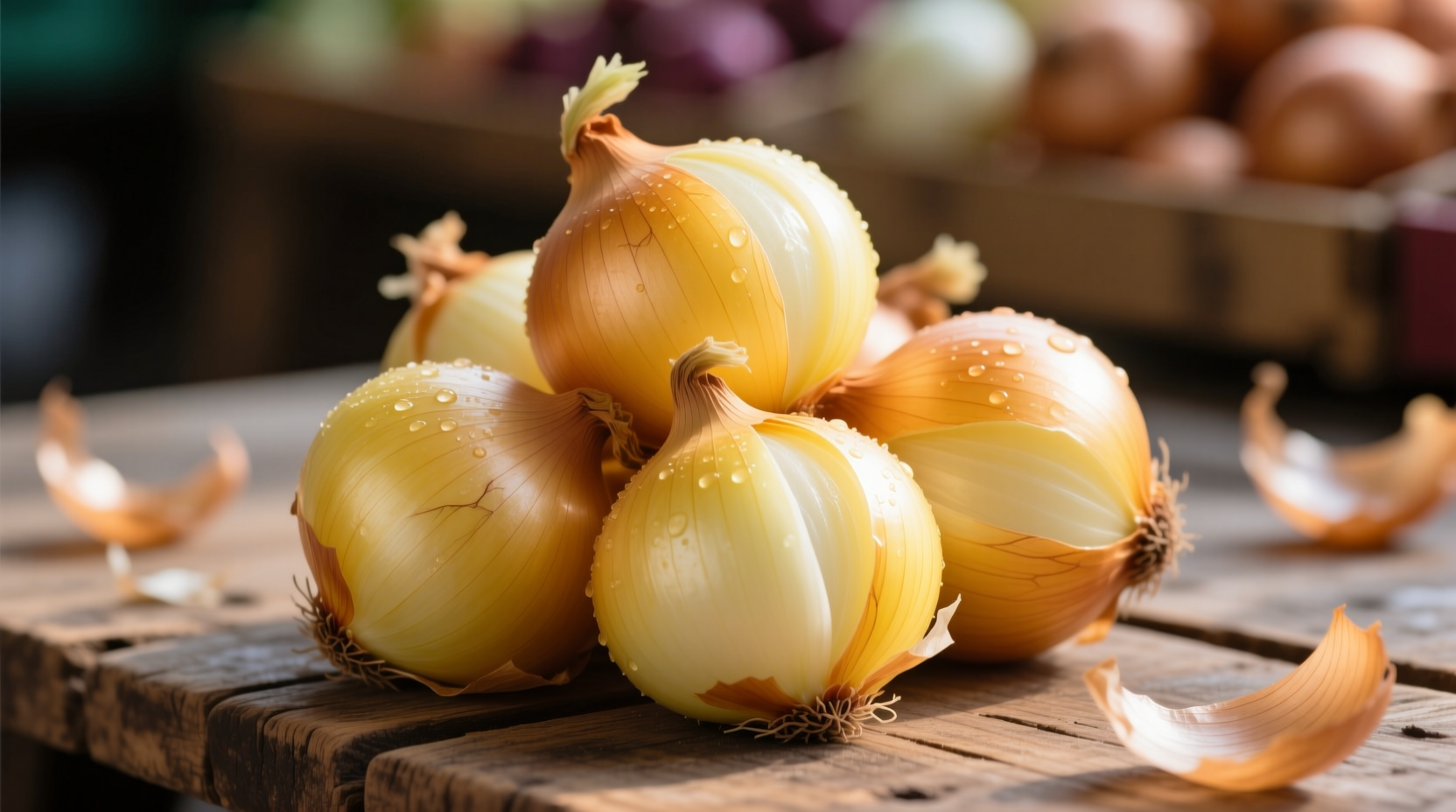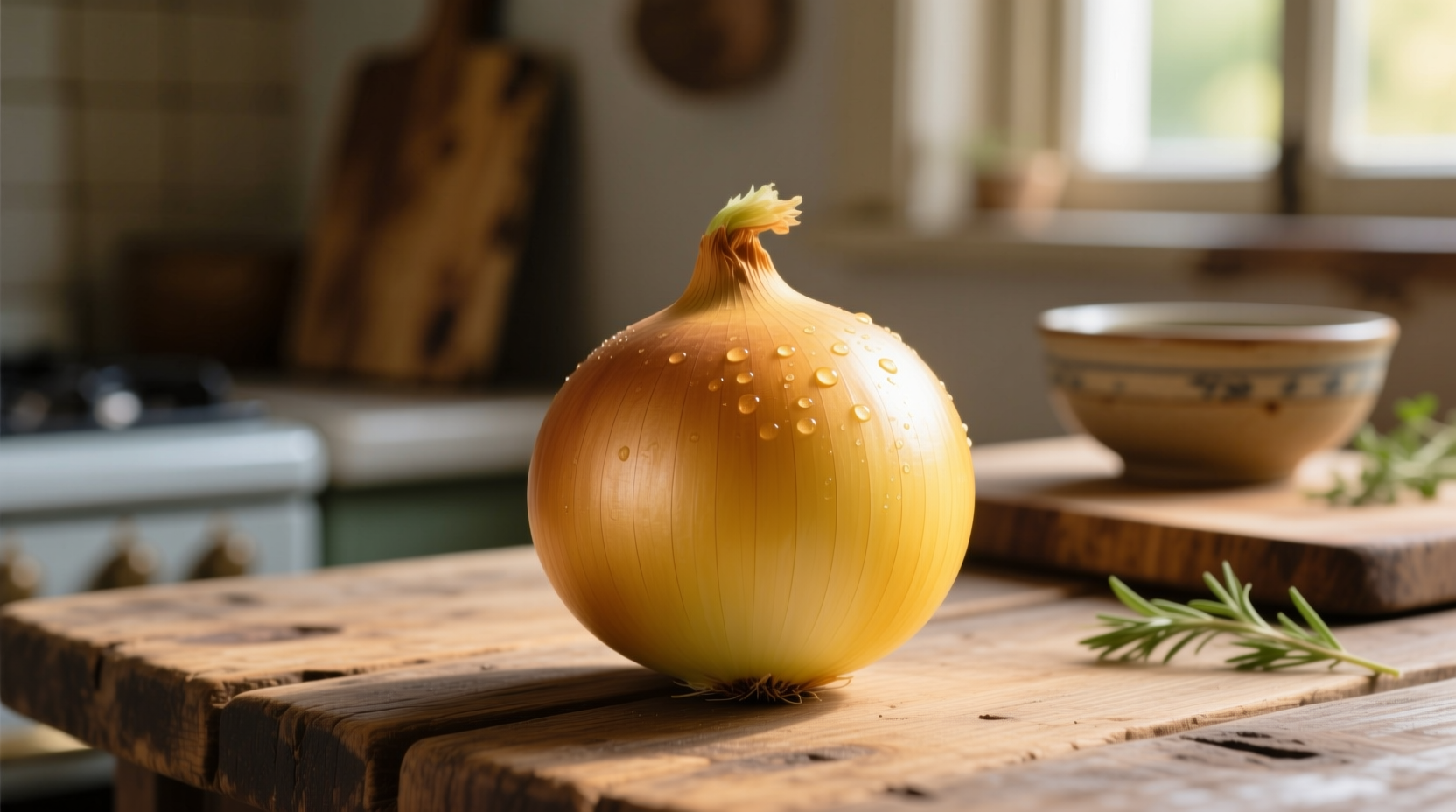When you reach for onions in your kitchen, understanding the subtle but significant differences between varieties can transform your cooking. Sweet yellow onions bridge the gap between the sharp bite of standard yellow onions and the delicate flavor of Vidalias, offering home cooks a remarkably versatile option that works across countless culinary applications. This comprehensive guide reveals exactly when and how to leverage their unique properties for better results in everything from salads to soups to grilled dishes.
What Exactly Are Sweet Yellow Onions?
Sweet yellow onions represent a specific category of yellow onions bred for lower pungency and higher sugar content. While all yellow onions share similar outer skin color, sweet varieties like the popular Texas Sweet or Imperial Sweet develop their distinctive mildness through careful cultivation in sulfur-deficient soils. The USDA Agricultural Research Service confirms that reduced sulfur compounds directly correlate with perceived sweetness in onions, explaining why certain growing regions produce consistently milder bulbs.

Sweet Yellow vs. Other Onion Varieties: A Practical Comparison
| Onion Type | Sugar Content | Sulfur Level | Best Culinary Uses | Storage Life |
|---|---|---|---|---|
| Sweet Yellow | High (5-6%) | Low | Raw applications, caramelizing, grilling | 2-3 weeks |
| Regular Yellow | Medium (4-5%) | High | Cooking, soups, stews | 2-3 months |
| Vidalia/Walla Walla | Very High (6-7%) | Very Low | Raw applications only | 1-2 weeks |
| Red Onion | Medium | Medium | Salads, pickling, garnishes | 1-2 months |
This comparison reveals why sweet yellow onions occupy a unique middle ground. Their moderate storage life (shorter than regular yellows but longer than true sweet varieties like Vidalias) makes them practical for everyday cooking while delivering superior flavor in applications where regular yellow onions would be too harsh.
When Sweet Yellow Onions Shine: Optimal Culinary Applications
Understanding the specific contexts where sweet yellow onions excel separates adequate cooking from exceptional results. Their balanced flavor profile makes them particularly valuable in three key scenarios:
Perfect for Raw Applications
Unlike regular yellow onions that can overwhelm salads and sandwiches with their sharp bite, sweet yellow onions provide noticeable onion flavor without the eye-watering pungency. They're ideal for:
- Fresh salsas and pico de gallo
- Burgers and sandwiches where onion flavor should complement rather than dominate
- Thinly sliced in green salads or grain bowls
- Quick-pickled for tacos and fish dishes
Superior Caramelization Properties
The higher sugar content in sweet yellow onions creates beautifully even caramelization with less risk of burning. Food science research from the USDA National Institute of Food and Agriculture shows that the Maillard reaction occurs more readily in onions with sugar content above 5%, which explains why sweet yellows develop richer, deeper flavors when cooked slowly. For perfect caramelized onions:
- Use medium-low heat for 30-40 minutes
- Add a pinch of salt early to draw out moisture
- Stir occasionally but not constantly to allow proper browning
- Finish with a splash of vinegar or wine to balance sweetness
Context Boundaries: When NOT to Use Sweet Yellow Onions
Despite their versatility, sweet yellow onions have limitations. Their lower sulfur content means they lack the sharp backbone needed in certain applications:
- Long-simmered soups and stews: Regular yellow onions maintain their flavor integrity better during extended cooking
- French onion soup: Traditional recipes rely on the sharper flavor of regular yellow onions for proper depth
- When maximum shelf life matters: Sweet varieties don't store as long as regular yellows
- When you need strong onion flavor: Dishes like onion dip benefit from the more assertive taste of regular yellows
Selecting and Storing Sweet Yellow Onions Properly
Maximizing the quality of sweet yellow onions starts with proper selection and storage:
Choosing the Best Bulbs
Look for onions that feel heavy for their size with dry, papery skins. Avoid any with soft spots, mold, or green sprouts. Unlike regular yellow onions which can have some neck moisture, sweet varieties should have completely dry necks as moisture accelerates spoilage. The University of Minnesota Extension recommends gently squeezing onions to check firmness—sweet varieties should feel solid with no give.
Optimal Storage Conditions
Sweet yellow onions require different storage than their regular counterparts:
- Store in a cool, dark, well-ventilated space (not the refrigerator)
- Keep away from potatoes which emit ethylene gas that speeds spoilage
- Do not wash before storing—moisture promotes mold
- Use within 2-3 weeks for best flavor and texture
Practical Substitution Guidance
When sweet yellow onions aren't available, understanding substitution options prevents recipe failures:
- For raw applications: Use red onions (soak in cold water for 10 minutes to reduce sharpness)
- For cooking: Regular yellow onions work well but add 1-2 teaspoons of sugar per onion to compensate
- For caramelizing: Shallots provide similar sweetness but use 1.5x the quantity
- Never substitute: White onions for sweet yellow in raw applications—they're too sharp
Frequently Asked Questions
Are sweet yellow onions the same as Vidalia onions?
No, while both are sweet onions, Vidalias are a specific variety grown only in Georgia with legally protected status. Sweet yellow onions refer to any yellow-skinned variety bred for sweetness, available year-round from multiple growing regions.
Can I substitute sweet yellow onions for regular yellow onions in recipes?
Yes, but with adjustments. In cooked dishes, you may need to reduce added sugar. In raw applications, sweet yellows work as direct substitutes. For long-cooked dishes, regular yellows maintain their flavor better over extended cooking times.
Why do my sweet yellow onions taste bitter when caramelized?
Bitterness during caramelization usually indicates heat that's too high. Sweet onions have higher sugar content that burns more easily. Cook over medium-low heat, allow proper time for moisture to evaporate, and stir occasionally rather than constantly for best results.
Do sweet yellow onions have different nutritional benefits than regular onions?
Nutritionally, sweet yellow onions are similar to regular yellow onions but contain slightly more natural sugars and fewer sulfur compounds. Both provide excellent sources of vitamin C, B vitamins, and antioxidants like quercetin, with minor variations based on growing conditions.











 浙公网安备
33010002000092号
浙公网安备
33010002000092号 浙B2-20120091-4
浙B2-20120091-4